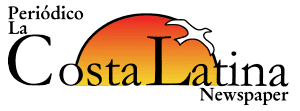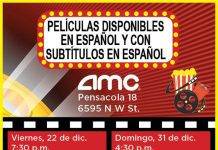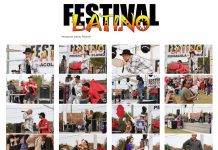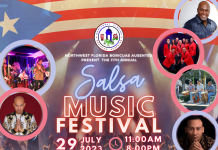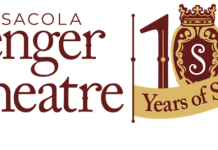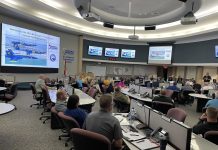Cómo los trabajadores indígenas de México construyeron y reconstruyeron Pensacola
Por Grace Resendez McCaffery, propietaria de Latino Media Gulf Coast Inc. y fundadora del Centro de Recursos Hispanos del Noroeste de Florida. Publicado originalmente en el Pensacola News Journal el 27 de junio de 2021. Nota del editor: esta es la decimonovena historia la cual es parte de una serie que se publicará en el Pensacola News Journal cada semana antes del 200 aniversario del condado de Escambia.
La influencia de los primeros asentamientos españoles sigue siendo una característica siempre presente en el paisaje de Pensacola. Los nombres de las calles, lugares la ciudad, los puntos de referencia de la ciudad y los apellidos familiares no solo contienen historias de la herencia española de Pensacola, sino que también marcan el comienzo de los Estados Unidos tal como lo conocemos. Aparte de los líderes, poco se menciona sobre las personas que viajaron con el primer asentamiento español.
Sabemos que 11 barcos trajeron a 1,500 personas de Veracruz, México, en el 1559. Muchos de los que iban en el barco eran aztecas y africanos esclavizados traídos para trabajar en la colonización de la costa norte del Golfo. Dos años después un huracán devastó el área, los habitantes sobrevivientes regresaron a Veracruz, pero esta no sería la última vez que los trabajadores indígenas de México jugaron un papel crucial en la construcción de nuestra comunidad.
Varios intentos de establecer asentamientos militarizados fracasaron debido a huracanes, enfermedades y calor intolerable, entre otras cosas. Después de una serie de ocupaciones por parte de España, Francia e Inglaterra, lo que hoy conocemos como “Florida Occidental” finalmente se convirtió en parte del Territorio de Florida de los Estados Unidos en 1821 y estableció la frontera entre Florida y Alabama tal como la conocemos. Los registros históricos documentaron que los matrimonios entre españoles, indígenas y africanos en esta área dieron como resultado descendientes de razas mixtas, quienes a su vez, ayudaron a construir una comunidad vibrante y contribuyeron a establecer una población saludable en esta parte del país.
Las uniones entre colonizadores europeos, indígenas y esclavos africanos, por supuesto también tuvieron lugar en lo que ahora llamamos América Latina. Por esta razón, hoy en día hay más de 20 países de habla hispana en el mundo. Aunque la influencia española en estos países sigue siendo significativa, los pueblos indígenas han mantenido con orgullo gran parte de su cultura e idiomas.
En “La Florida,” como todavía la llaman muchos hispanohablantes, aunque la gente de la región se adaptó y la comunidad creció, no pudieron cambiar la vulnerabilidad del área a los huracanes y la necesidad de reconstruir. De hecho, todavía se nos recuerda que debemos prepararnos para los huracanes y las tormentas tropicales que inevitablemente causarán daños cada año. Las comunidades de Florida y de la costa del Golfo se preparan para la temporada de huracanes entre junio y noviembre, sabiendo que los resultados pueden ser devastadores. Si bien la tecnología moderna puede ayudarnos a predecir y seguir la trayectoria y la intensidad de una tormenta, aún debemos trabajar juntos para recuperarnos de ellos. A menudo, necesitamos ayuda.
En el 2004, el huracán Ivan no solo fue inmenso sino que también tuvo una larga duración, golpeó a Pensacola como una tormenta de categoría cinco. El daño resultante sería más de lo que nuestra comunidad abrumada y cansada podría reparar por sí sola. Los puentes estaban rotos, las carreteras estaban intransitables. Una vez que los evaluadores de daños pudieron acceder al área, la cuestión de cómo traer los materiales de construcción fue un dilema. A medida que se despejaron los caminos y carreteras, se hizo evidente la necesidad de una significativa fuerza laboral. Aparentemente de la noche a la mañana, trabajadores latinos, en su mayoría de origen mexicano, comenzaron a llegar a la región para reconstruir el área devastada.
Ciudadanos mexicanos de casi todos los 31 estados descendieron a Pensacola para reparar rápidamente los techos de negocios y hogares que habían sido cubiertos con lonas azules para evitar que el agua causara más daños. Pronto, los negocios comenzaron a reabrirse y las familias pudieron regresar a sus hogares. Los residentes de Pensacola que han vivido aquí desde hace años se sorprendieron al ver el cambio repentino en la demografía local y muchos estaban preocupados por las dificultades que nuestra comunidad podría tener con la comunicación.
A pesar de las dificultades de trabajar como jornalero durante la recuperación del desastre, muchos de estos trabajadores se quedaron para establecer un hogar y criar a sus familias aquí, y el panorama cultural se ha transformado una vez más. Se han abierto tiendas que ofrecen productos mexicanos, centroamericanos y sudamericanos, la presencia de auténtica comida mexicana ha aumentado significativamente y el periódico bilingüe de Pensacola, La Costa Latina, sigue en publicación, así como su celebración del Festival Latino cada año. El festival generalmente comienza con una bendición maya.
Hoy en día, nuestros vecindarios de Pensacola albergan a residentes de todos los países de habla hispana del mundo. Las llegadas recientes de centroamericanos al noroeste de Florida incluyen personas indígenas cuyo primer idioma no es el español. De manera similar, muchos residentes de América del Sur también traen tradiciones derivadas de su herencia indígena.
Al celebrar el 200 aniversario de nuestra ciudad, es importante agradecer a todos los que han contribuido y continúan contribuyendo a una comunidad próspera. Aunque la comunicación a veces puede ser un obstáculo, nuestra propia historia nos dice que nuestra comunidad puede florecer con amor, compasión y respeto mutuo por la humanidad.
FOTO: (Foto de archivo del Pensacola News Journal) Los contratistas trabajan en un techo dañado después de una tormenta. ~ PHOTO: (Pensacola News Journal file photo) Contractors work on a damaged roof in the aftermath of a storm.
How indigenous laborers from Mexico built and rebuilt Pensacola
By Grace Resendez McCaffery, owner of Latino Media Gulf Coast Inc. and founder of the Hispanic Resource Center of Northwest Florida. Originally published in the Pensacola News Journal June 27, 2021. Editor’s note: This is the 19th of a series of stories that will be featured in the Pensacola News Journal each week leading up to the 200th anniversary of Escambia County.
The influence of the first Spanish settlements continues to be an ever-present feature of the Pensacola landscape. Street names, parts of town, city landmarks and family surnames not only hold stories of Pensacola’s Spanish heritage, but also mark the beginning of United States as we know it. Aside from the leaders, little is mentioned about the individuals who traveled with the first Spanish settlement.
We know that 11 ships brought 1,500 people from Veracruz, Mexico, in 1559. Many of those on the ship were Aztecs and enslaved Africans brought for labor in the colonization of the northern Gulf Coast. Two years after a hurricane devastated the area, the surviving inhabitants returned to Veracruz, but this would not be the last time indigenous workers from Mexico played a crucial role in building our community.
Several attempts to establish militarized settlements failed due to hurricanes, illness and intolerable heat, among other things. After a series of occupations by Spain, France and England, what we know today as “West Florida” eventually became part of the Florida Territory of the United States in 1821 and established the boundary between Florida and Alabama as we know it. Historical records documented that marriages among the Spanish, indigenous and Africans in this area resulted in mixed-race descendants, who in turn, helped build a vibrant community and contributed to establishing a healthy population in this part of the country.
The unions of European colonizers, indigenous people and African slaves, of course, took place throughout what we now refer to as Latin America. For this reason, there are more than 20 Spanish-speaking countries in the world today. While the Spanish influence throughout these countries continues to be significant, indigenous people have proudly maintained much of their culture and languages.
In “La Florida” — as many Spanish speakers still call it today — though the people in the region adapted and the community grew, they couldn’t change the area’s vulnerability to hurricanes and the need to rebuild. In fact, we are still reminded to prepare for hurricanes and tropical storms that will inevitably cause damage each year. Communities throughout Florida and along the Gulf Coast brace for hurricane season between June and November, knowing that the results can be devastating. While modern technology can help us predict and follow the track and intensity of a storm, we still must work together to recover from them. Often, we need help.
In 2004, the large, long-lived Hurricane Ivan hit Pensacola as a category five storm. The resulting damage would be more than our weary and overwhelmed community could repair on its own. Bridges were broken, highways were impassable. Once damage assessors were able to access the area, the question of how to bring in building materials was a dilemma. As roads and highways were cleared, the need for a significant labor force was evident. Seemingly overnight, Latino laborers, mostly of Mexican origin, began to arrive to the region to rebuild the devastated area.
Mexican nationals from nearly all 31 states descended to Pensacola to quickly repair roofs on businesses and homes that had been covered with blue tarps to stop water from creating further damage. Soon, businesses began to reopen, and families were able to move back into their homes. Long-time residents of Pensacola were surprised to see the sharp change in the local demographic, and many were concerned about the difficulties our community might have with communications.
Despite the hardships of working as a laborer during disaster recovery, many of these workers stayed to establish a home and raise their families here, and the cultural landscape has once again transformed. Stores providing Mexican, Central and South American products have opened, the presence of authentic Mexican food has increased significantly, and Pensacola’s bilingual newspaper, La Costa Latina, remains in publication as well as their annual Latino Festival. The festival usually begins with a Mayan blessing.
Today, our Pensacola neighborhoods are home to residents from all Spanish-speaking countries around the world. Recent arrivals of Central Americans in Northwest Florida include indigenous people whose first language is not Spanish. Similarly, many residents from South America also bring traditions carried from their indigenous heritage.
As we celebrate our city’s 200th anniversary, it is important to appreciate all who have contributed and continue to contribute to a thriving community. Though communication may be an obstacle at times, our own history tells us that our community can flourish with love, compassion and mutual respect for humanity.
